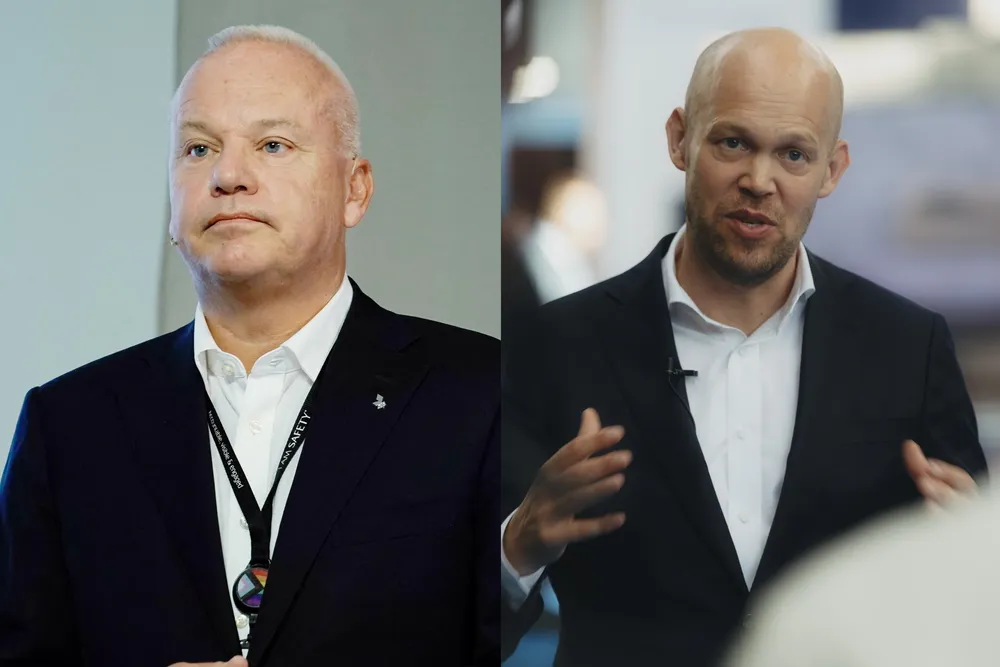Double down or walk away? Equinor’s Orsted dilemma
Norwegian oil giant’s investment in Orsted forms 'major pillar' of its green transition plan – but will it stay the course with troubled offshore wind developer?

Fast forward a few months and Orsted is now putting the resolve of Reitan and his boss at the Norwegian state-owned oil giant, CEO Anders Opedal, to the test.
Orsted said it has been forced into the rights issue after the Trump Administration’s attacks against US offshore wind made it impossible to find a buyer for a stake in its 924MW Sunrise Wind project off New York, creating a budgeting shortfall.
In a painful irony, Trump’s April stop work order on Equinor’s own planned New York array, Empire Wind, may have been the final nail in the coffin when it came to finding an investor for Sunrise. Certainly Orsted sees it that way.
Assuming Orsted does go ahead with the rights issue – that will be confirmed at an extraordinary general meeting on 5 September – Equinor will be forced into a decision it would rather not have to make.
Existing Orsted shareholders will have a pre-emptive right to subscribe for their respective pro rata share of the capital increase, retaining the same relative ownership as they have today. Orsted’s majority shareholder, the Danish state, has committed to maintaining its 50.1% stake, albeit amid some political pushback.
So Equinor can either decline to participate and see its shareholding diluted, buy enough shares to maintain its current 10% stake, or potentially even double down and snap up even more shares while they are cheap.
A chance for Equinor to 'claw back' its investment?
“This is a fantastic opportunity for Equinor to do more if they want to,” he said, also with the aim of trying to “claw back some of their loss.”
“If you believe in the offshore market and Orsted’s capability of growing profitably with this market, the long-term case could indeed look attractive from a return point of view,” he said.
Recent turmoil and market challenges likely leaves the “short-term potential more subdued,” said Pedersen. However, Equinor’s interest is “broader than just a short-term return-hope. It is a strategic green-transition investment.”
Investments in renewables and low carbon solutions were trimmed to around $5bn in total for 2025-2027. Equinor also lowered its decade-end capacity target for renewables to 10-12GW, from 12-16GW previously. That included conversion into assets of its stake in Orsted.
Equinor’s strategy has left it with “very limited levers to decarbonise,” said Shu Ling Liauw, CEO of climate finance advisory Accela Research.
If Equinor does “walk away” from Orsted, that “increases risk for the company’s transition plan,” she said. “It removes another pillar from a plan already heavily reliant on carbon capture and storage, which is yet to work at scale as a product offering or transition lever.”
“However, any decision here will likely be financial.”
“Equinor has retreated from its transition strategy over the past year,” she said, adding that the company’s renewables business has lost $1bn since the 2021 financial year. “For these reasons, we think it's unlikely that Equinor will see Orsted’s rights issue as an opportunity to double down.”
“In our view, the likely outcome is that it holds back on further investment.”
'Trust is lost' in Orsted
“Offshore wind should be a long-term play, but it's a relatively low return play," said Jérôme Guillet, managing director for financial advisory Snow.
“Equinor is torn between their ability to get higher returns in the short term in oil and gas, and their politically encouraged mission to help the transition.”
In Guillet’s view, oil and gas majors are generally “not well-placed to invest in renewables because it's not a very good use of the expensive capital they have access to.”
“The business model for operator utilities (like Orsted) has become harder to make work, because it relied on bringing in investors with cheap capital,” he said. “These investors are no longer available, or only with more expensive capital,” due to the rise in interest rates.
“So Orsted gets less money from them for the same asset, with a fixed underlying revenue” – for example, an offshore wind farm tied to a Contract for Difference. That means that Orsted “needs to put more” of its own money in, “and the returns on that become weaker.”
Guillet continued that Orsted also “sold” its business model of divesting stakes in projects to low cost of capital investors to the stock market. But now that is “delivering lower returns than expected… that immediately triggers a lower valuation.”
Orsted declined to comment.
(Copyright)